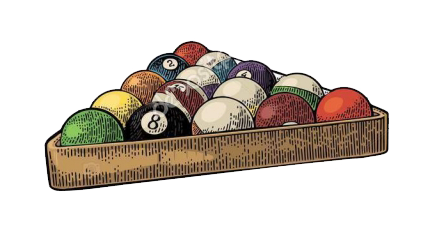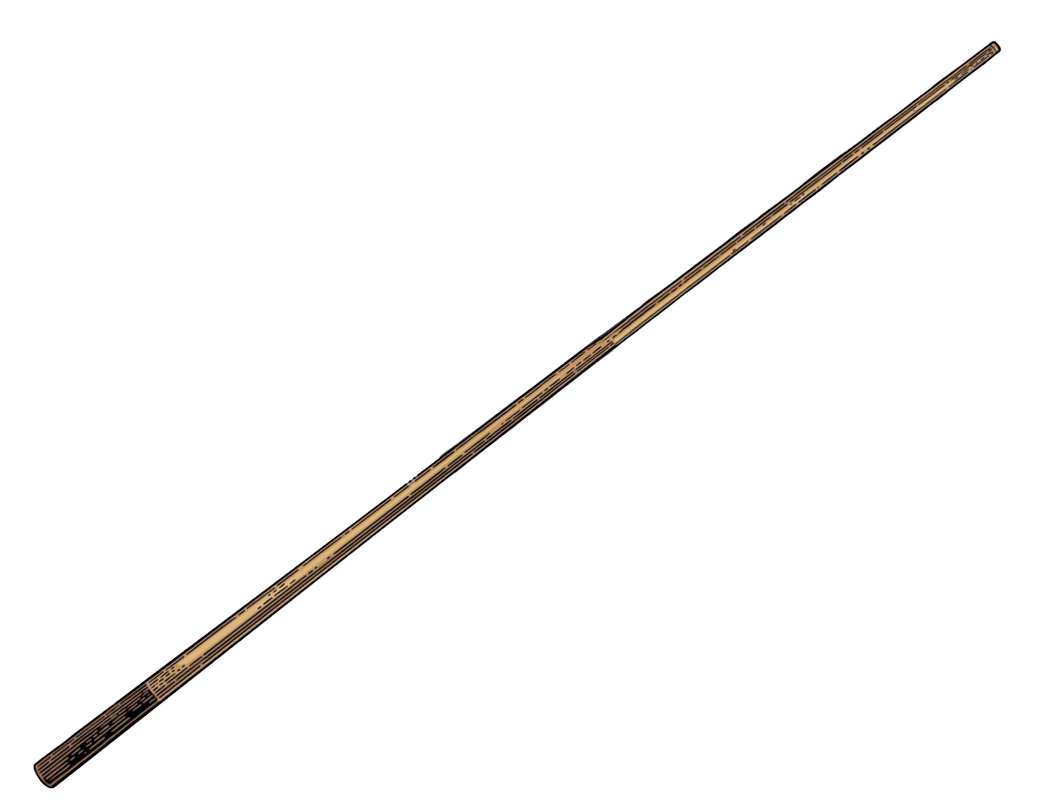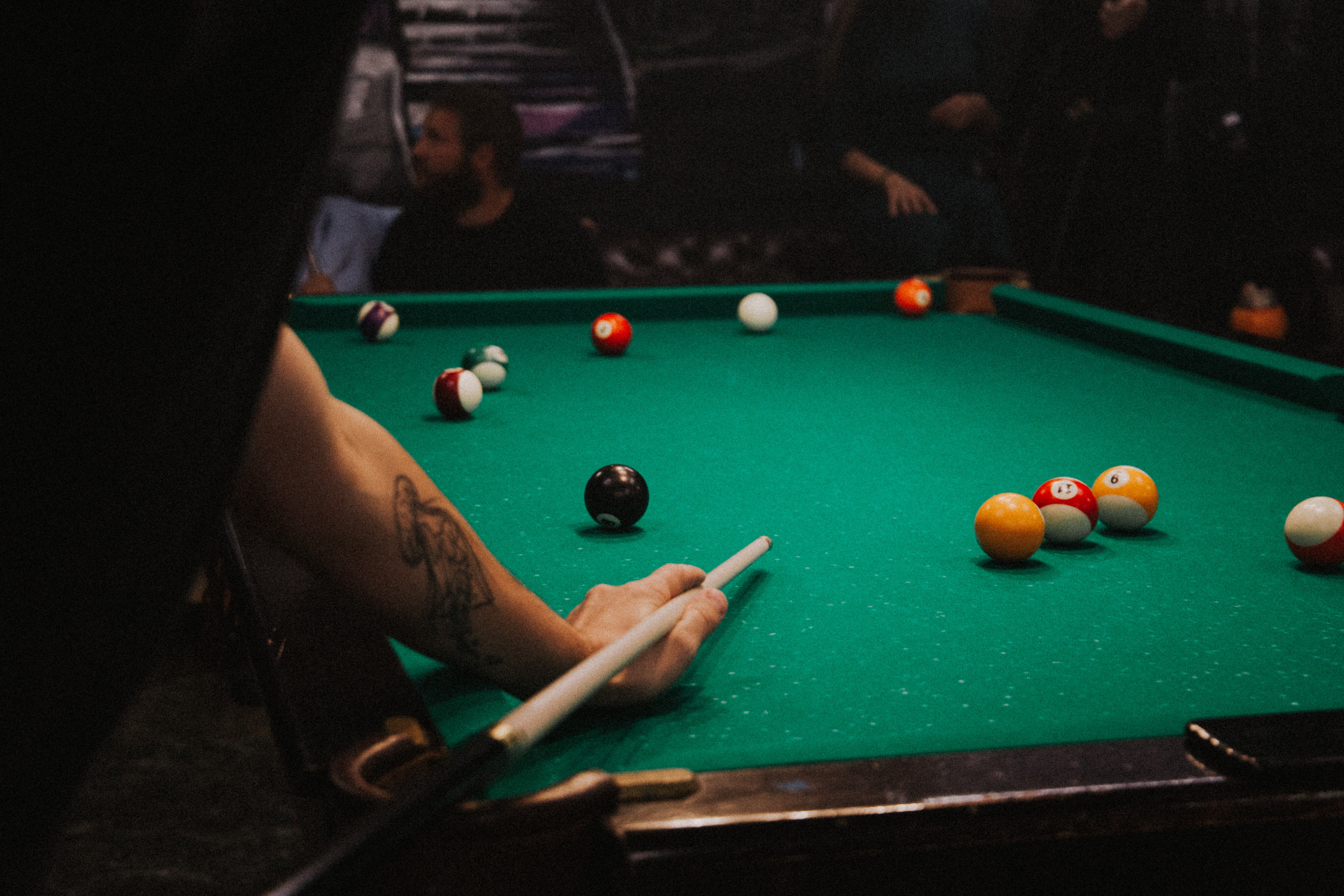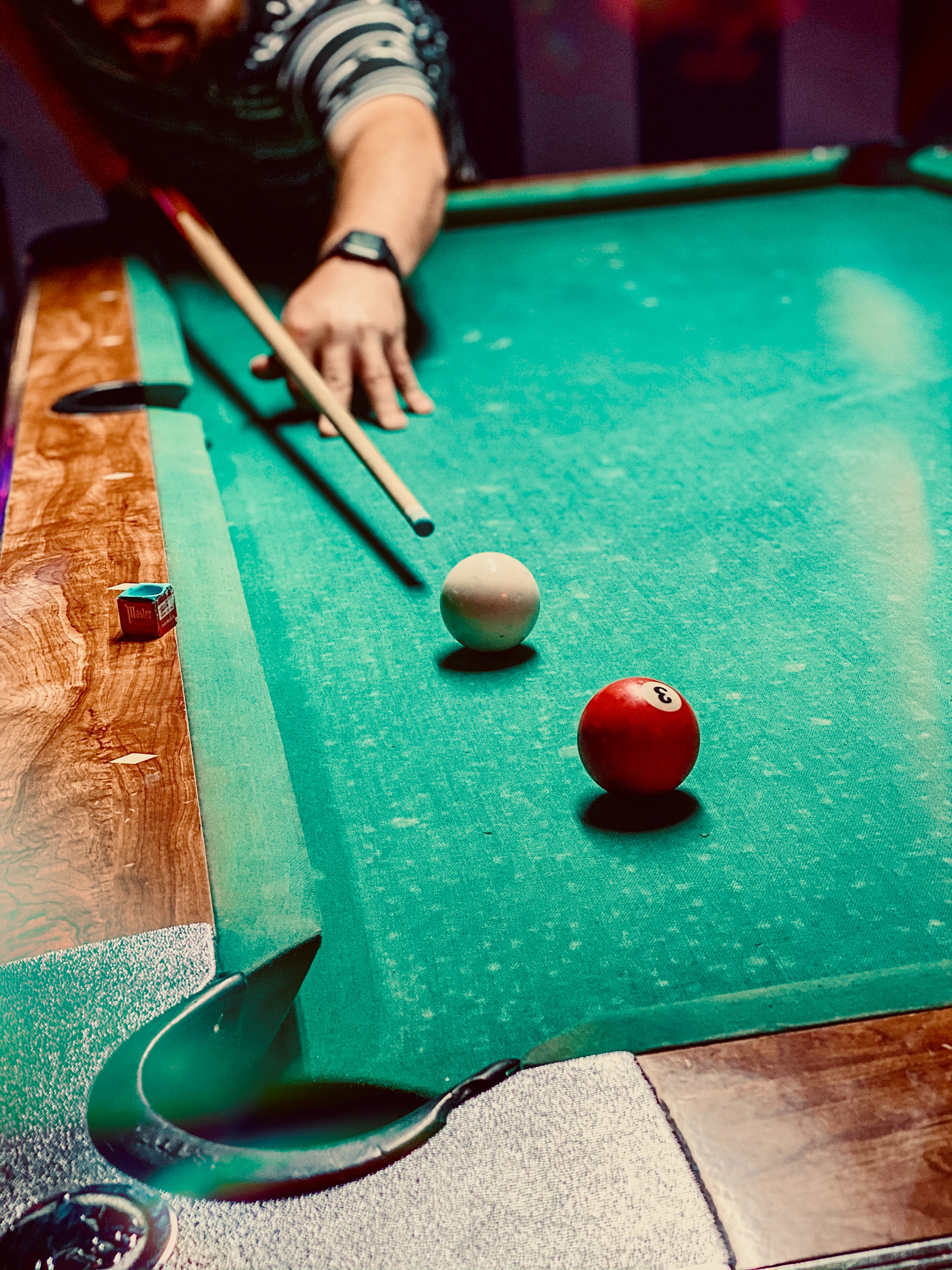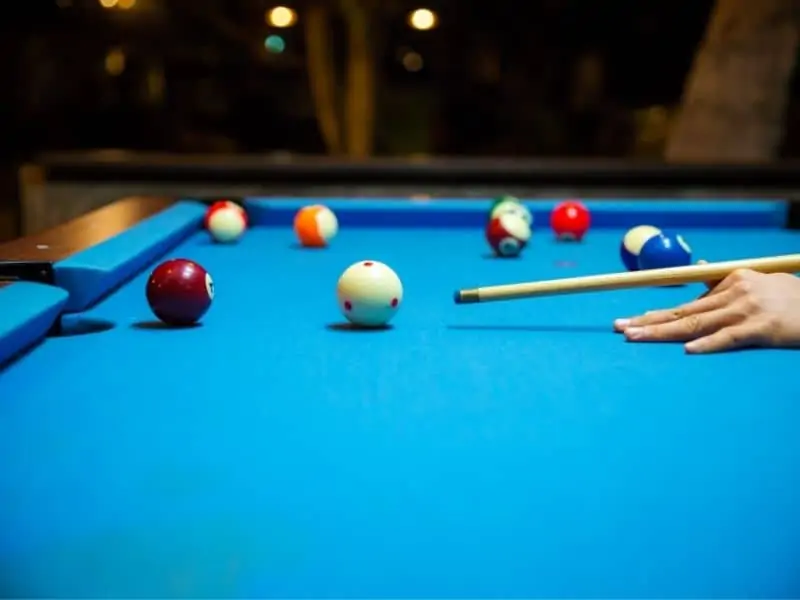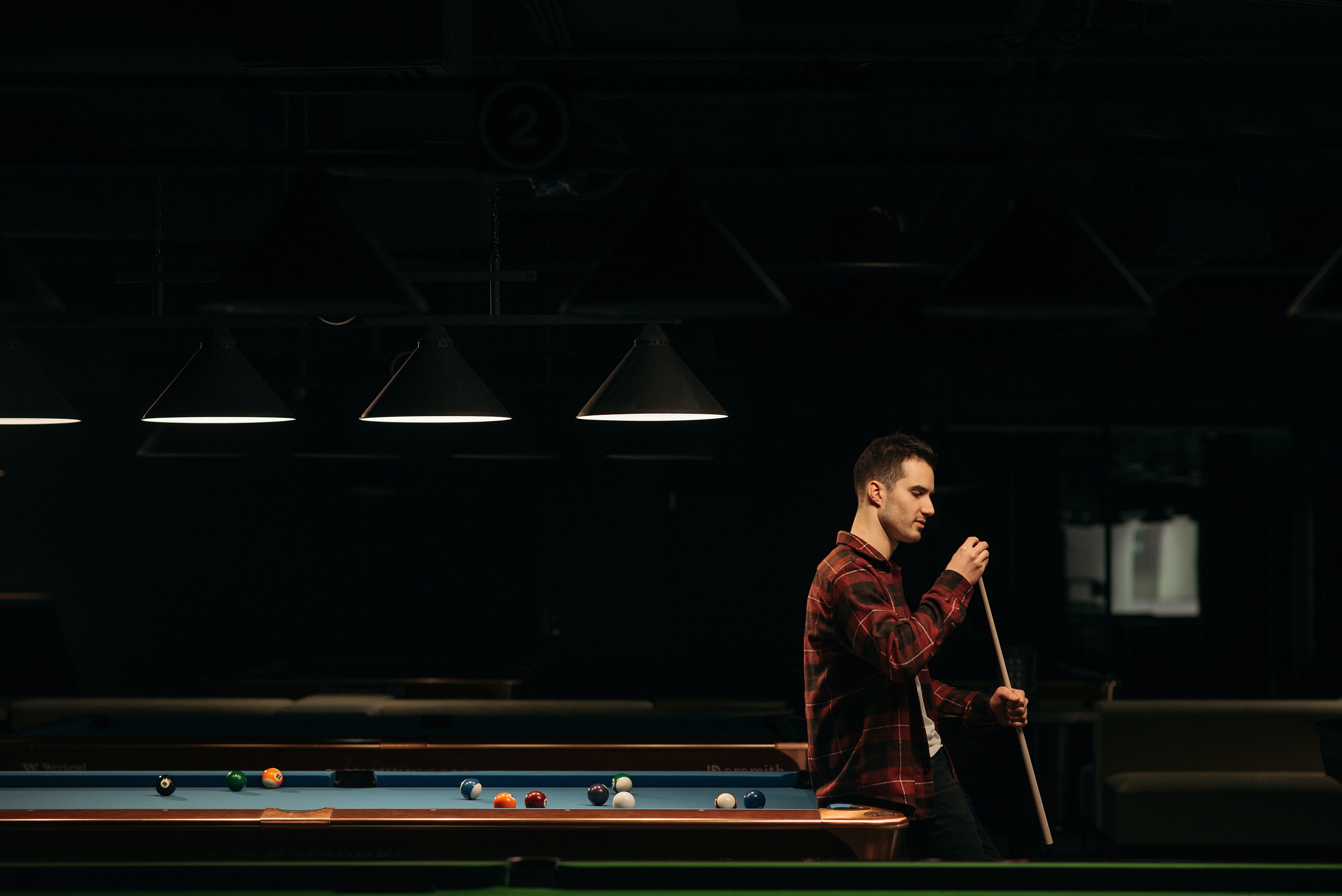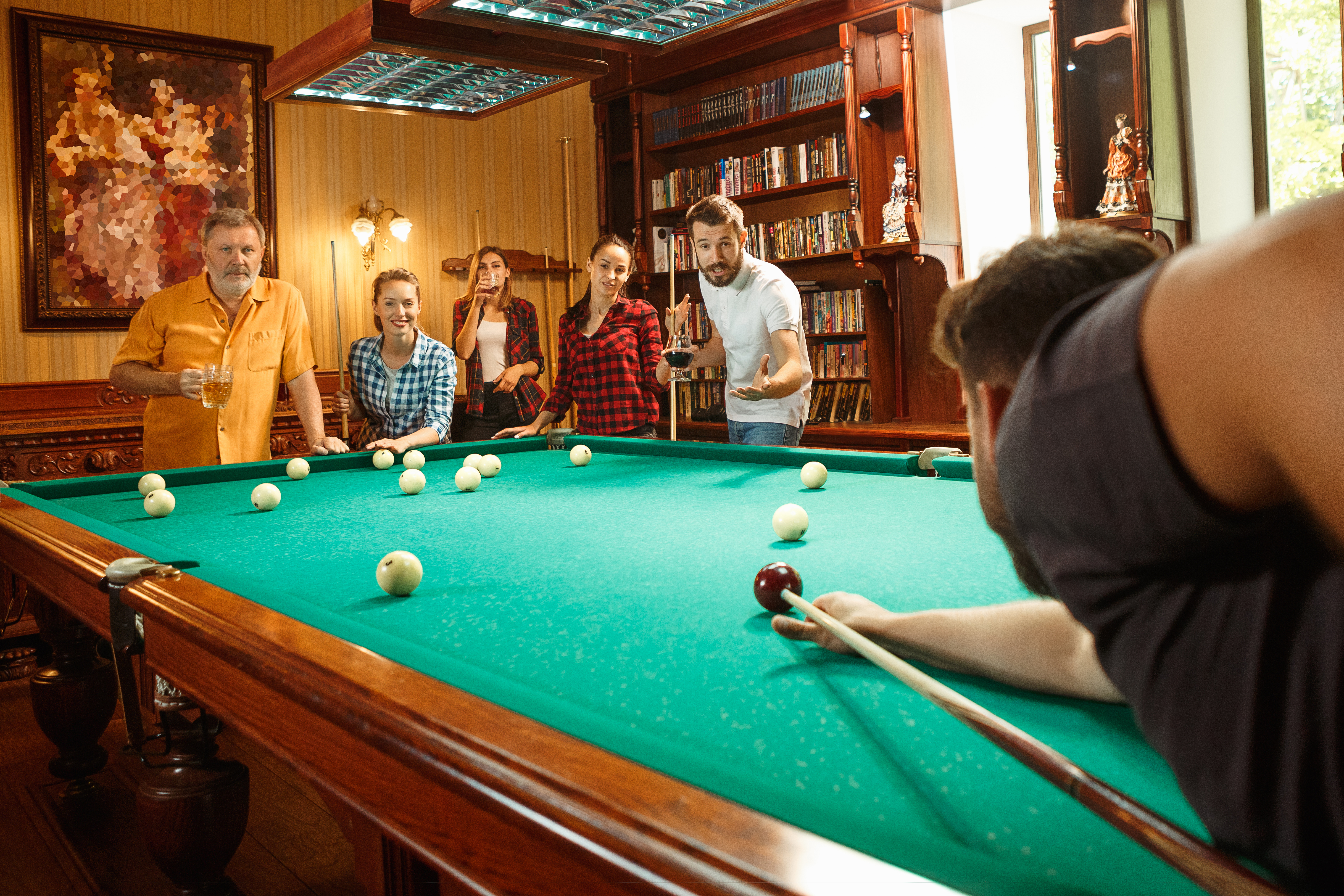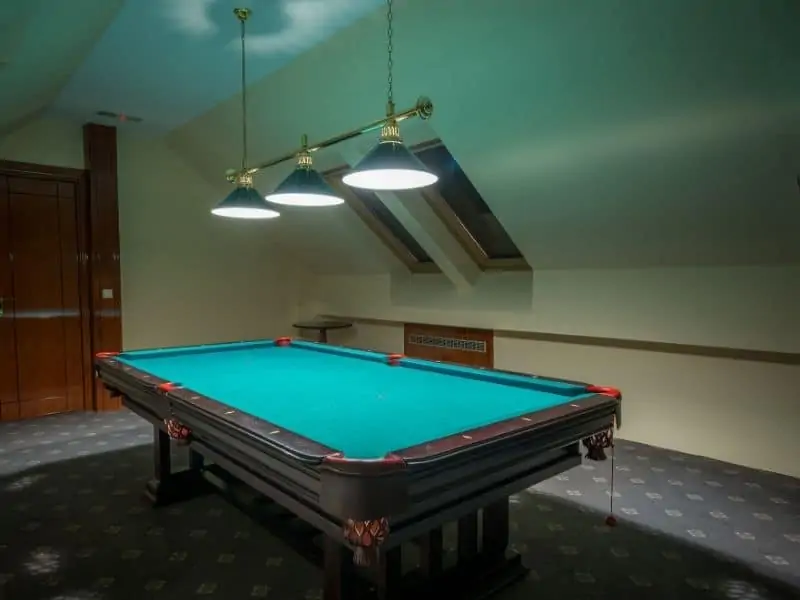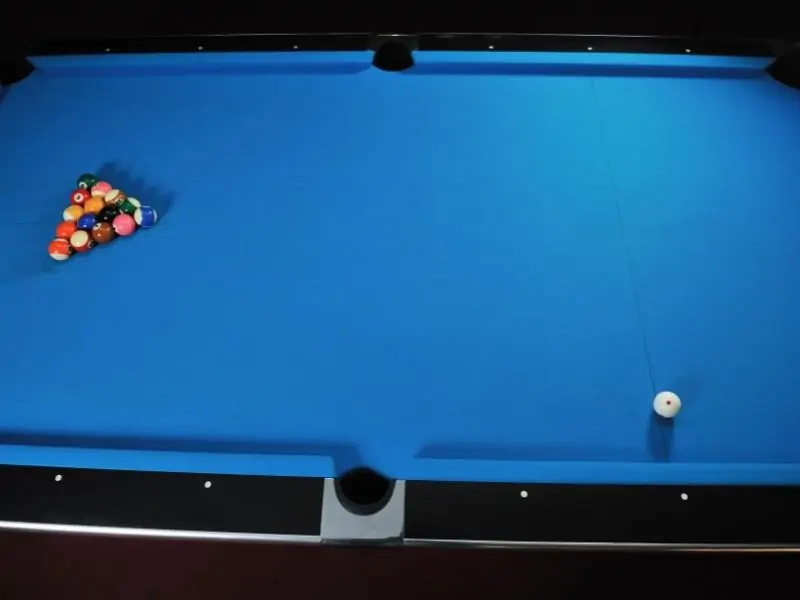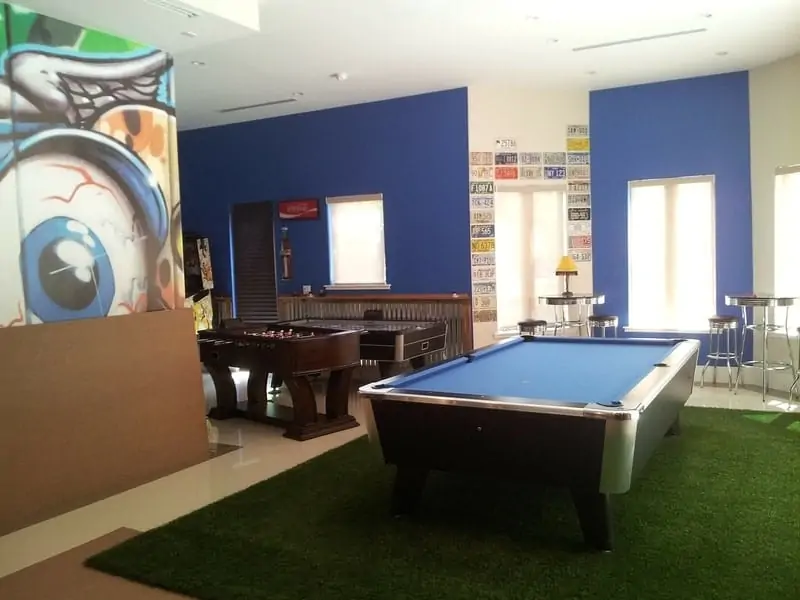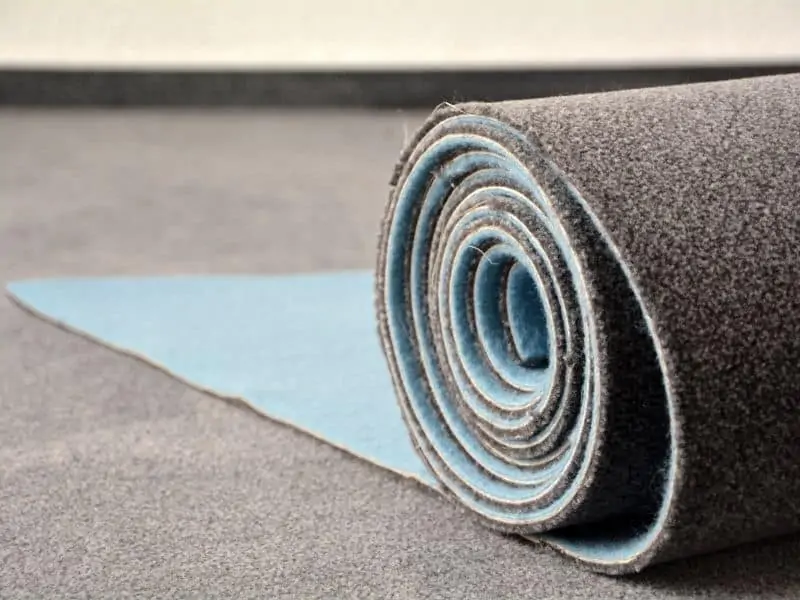Because playing pool requires players to take shots from all sides of the pool table, it’s important that you provide adequate space between your pool table and its surrounding walls.
After all, there’s not much worse (in the game of pool anyways) than trying to sink a shot and having it hindered from the wall behind you. Generally speaking, the further you can place your pool table from the wall, the better.
At minimum, your pool table should be at least five feet from its surrounding walls. This will give you enough space to take shots from every side of the table without interference from the wall behind you.
However, the exact amount of space you need will largely be determined by what length pool cues you intend to use. And there are some instances where you may want even more space.
In this article we’re not only going to discuss how far a pool table should be from the wall, but how to determine the exact amount of space you need, what size pool table will work best for your space, and what considerations you should make prior to choosing a spot for your pool table.
Cue Length Determines Spacing
Although 58 inches is the industry standard when it comes to pool cue length, there are numerous other lengths available. And depending on which length cue you play with, the amount of space needed between your pool table and the wall will vary.
For example, if you’re using a 48 inch cue, then you need at least 48 inches between your pool table and its surrounding walls. This will ensure the butt end of your cue wont hit the wall when taking a shot. Likewise with a 58 inch cue, you technically only need 58 inches of space between the table and its surrounding walls.
So to determine exactly how much space you need, you simply need to determine what length cues you’ll be using. At the very least your pool table should be positioned a cues length away from the wall.
However, the five foot rule is still recommended for optimal play. Although you can get by with just a cues length, the extra bit of cushion will further ensure there won’t be any interference when taking shots that may require an especially awkward stance. Not to mention the extra space makes playing a bit more comfortable. But if five feet of spacing can’t be established, simply use your cue length as the bare minimum.
When Additional Space May Be Necessary
Although you can get by with a cues length of space (minimally) or five feet of space (optimally), between your pool table and the wall, there are instances where you may want even more space.
Because pool is often enjoyed with close friends and family, a little extra space around the table for socialization can greatly improve the atmosphere of your pool room. After all, those at the table don’t want to contend with spectators while trying to concentrate on a difficult shot, nor do the spectators want to constantly be on guard against pool cues being thrust into their sides!
If you plan on your pool table being the focal point of social gatherings in your home, you may want to consider an additional two or three feet of space around your table.
Furthermore, you’ll also want to take into account any furniture, decorations, or other obstacles surrounding your pool table. Card tables, bar stools, refrigerators, neon lights, and the like can all get in the way if positioned too close. A well furnished and tastefully decorated billiard room is certainly desirable but not if it detracts from the main purpose of the room: playing pool!
What Size Room Do You Need For a Pool Table?
Highly relevant to the question of how far a pool table should be from the wall is what size room do you need for a pool table.
Because pool tables vary in size, the room size needed to accommodate them vary as well. For example, a six foot pool table requires a minimum room size of 11’ x 13’ 6”, whereas a nine foot table requires a minimum room size of 12’ 6” x 16’ 6”.
However, as mentioned earlier, it’s not just the size of the table that matters, but the length of cues being used as well. The shorter the cue, the less space you’ll need regardless of table size.
Table: Billiard Room Requirements
| Table Size (Playing Surface) | Cue Length | Minimum Room Size |
|---|---|---|
| 3’ x 6’ (33”x66”) | 48” | 11’ x 13’ 6” |
| 52” | 11’ 6” x 14’ 6” | |
| 58” | 12’ 6” x 15’ 6” | |
| 3.5’ x 7’ (38”x76”) | 48” | 11’ 6” x 14’ 6” |
| 52” | 12’ x 15’ | |
| 58” | 13’ x 16’ | |
| 4’ x 8’ (44”x88”) | 48” | 12’ x 15’ 6” |
| 52” | 12’ 6” x 16’ | |
| 58” | 13’ 6” x 17’ | |
| 4’ x 8’ Over-sized (46”x 92”) | 48” | 12’ x 16’ |
| 52” | 12’ 6” x 16’ 6” | |
| 58” | 13’ 6” x 17’ 6” | |
| 4.5’ x 9’ (50”x100”) | 48” | 12’ 6” x 16’ 6” |
| 52” | 13’ x 17’ | |
| 58” | 14’ x 18’ |
Workarounds for Tight Spaces
While ideally we’d like to have plenty of space all the way around the pool table, sometimes it just doesn’t work out that way. Maybe you have a support pole in your basement that, for obvious reasons, can’t be moved and forever serves as an interference to your otherwise unobstructed access to the table. Or perhaps the room you have dedicated to your pool table doesn’t allow for five feet of clearance all the way around. It happens.
If you find yourself in a tight spot, consistently unable to take shots from a certain area of the table, your best bet is to buy a few shorty cues. Shorty cues, as their name implies, are short pool cues. They’re designed to be used in tight spaces where a full length pool cue just doesn’t work. You can get a two pack of 36 inch cues on Amazon for under $30!
If your table is already in place and space is tight, there’s really not much else you can do to rectify the situation. If you have an alternative area to put your table in, that’s always an option. But, of course, that’s a decision only you can make.
Plan Ahead
If you haven’t already purchased and installed your table, your best bet is to plan ahead. Use the chart above to determine what size table you should buy relative to the space it’s going in. Also consider what other furnishings and décor you may have to work around and how many people, on average, will be congregating around the table.
The worst thing you can do is buy and install a table only to find out that you can’t play on it comfortably in the space you’ve chosen for it. If you can’t maintain at least a cues length of space around the table, chances are the table is too big for the space.
You may also want to consider a wall mount rack for storing your gear as opposed to a floor rack. While this won’t save a ton of floor space, it does help.
In Conclusion
As a rule of thumb, your pool table should be at least a cues length away from the wall, minimum. Optimally, it’s best if you have at least five feet of space, even more if possible.
When it comes to how far a pool table should be from the wall, there’s really no such thing as being too far away. You can always add more furnishings and décor to fill the void. On the contrary, however, a billiard room with not enough space can be uncomfortable to play in at best, and almost unusable at worst.
